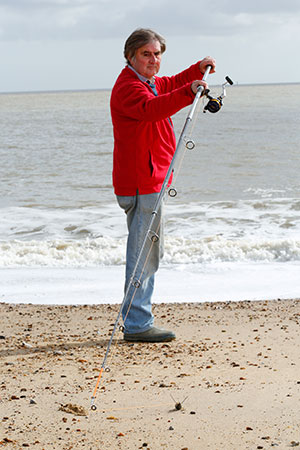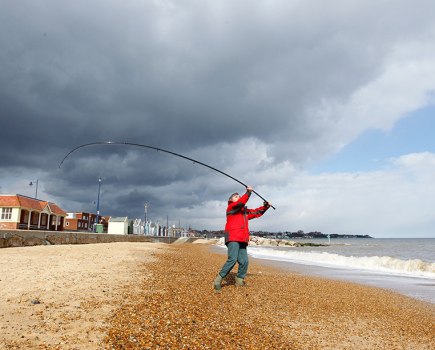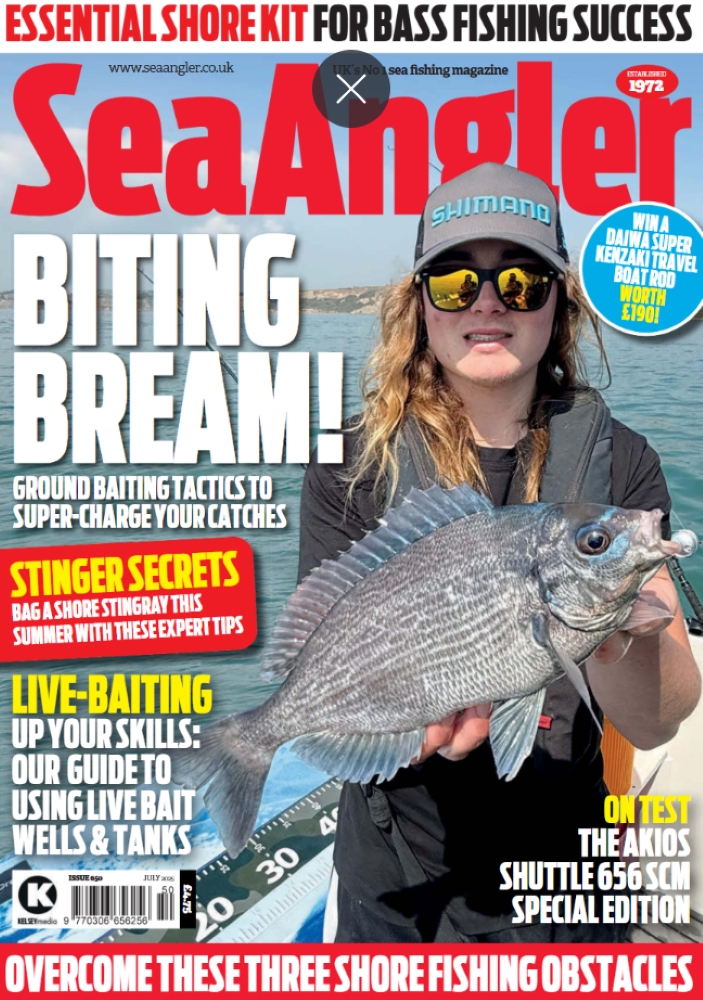Improve your casting skills by understanding the factors determining the distance you need between lead weight and rod tip
Words by John Holden
To answer the many questions about leader drop lengths, I’ll focus on the areas that can make a big difference. This involves a bit of measuring and testing at first, but later on experience will let you find the right length for any rod quickly and mostly by feel.
 Bear in mind that so far as beach fishing goes this is not the exact science it must be for tournament casting. Somewhere in the ballpark is usually good enough. Half the rod length is generally a good starting point.
Bear in mind that so far as beach fishing goes this is not the exact science it must be for tournament casting. Somewhere in the ballpark is usually good enough. Half the rod length is generally a good starting point.
The underlying rules are these: The longer the drop, the softer and more slowly the rod comes under compression, also called loading or bending. The shorter the drop, the harder and more quickly the rod begins to compress.
Then there are the swing and layout angles to think about for pendulum and off-ground work. Here, the straighter out from the rod tip the sinker lies or swings, the less the early compression and the slower the rod’s response will be. If the sinker swings towards or lies under the rod, as in the Brighton off-ground method, the rod’s response when you start the cast will be quicker and harder.
INTERPLAY
Let’s set up a little off-ground cast and imagine looking down on it. The rod tip is low and pointing directly away from the water, the shockleader runs straight out of the rod tip and the sinker lies on the beach. Using the tip ring as the centre and sinker position as the starting point, draw a mental semi-circle around to the right (as a right-hand caster would see it) ending directly under the rod.
 Somewhere within that semi-circle is a good angle to lay out the sinker for ground casting or swing it to start a pendulum cast. Based on the rules above, the closer the sinker to the rod when the cast starts, the higher and quicker the loading will be. The same principle applies to pendulum casting.
Somewhere within that semi-circle is a good angle to lay out the sinker for ground casting or swing it to start a pendulum cast. Based on the rules above, the closer the sinker to the rod when the cast starts, the higher and quicker the loading will be. The same principle applies to pendulum casting.
Now we dial in the leader length. Whatever the angle, a long drop will tend to give a slower and lighter compression than a shorter drop. Combining both factors, the main aim of playing around with drops and angles is to find which combination works well for a) the style of casting, b) the stiffness and action of the rod, c) the sinker weight, and d) the circumstances, which means how your choice of the other three points is affected by such things as the nature of the beach, whether you’re on dry land or wading, and so on.
There is a lot of leeway in the system. Within reason you can find a length of drop you like then set the angle to match. Or vice versa. This interplay between drop and angle also means that within the semi-circle there may be several settings that work well for you. The only way to find them is by testing. That done, the road is clear for fine tuning the system for the different rods you use and the places you fish.







